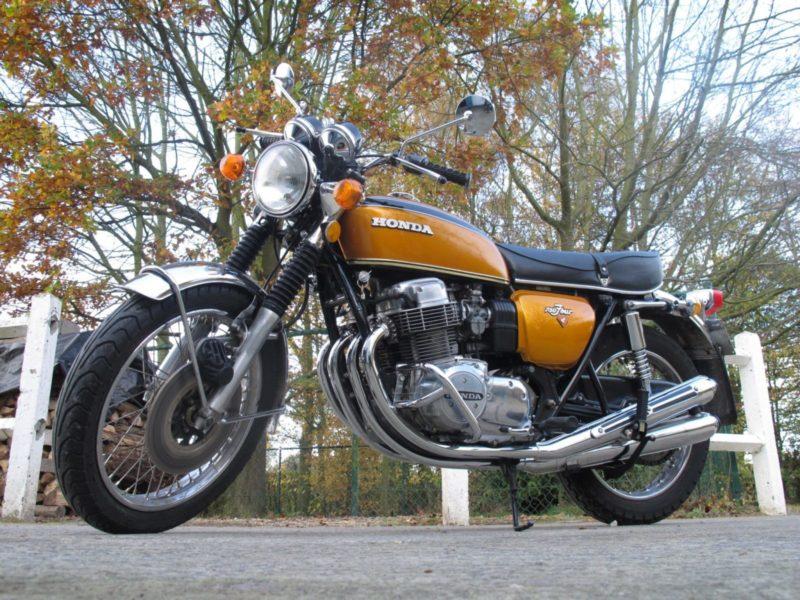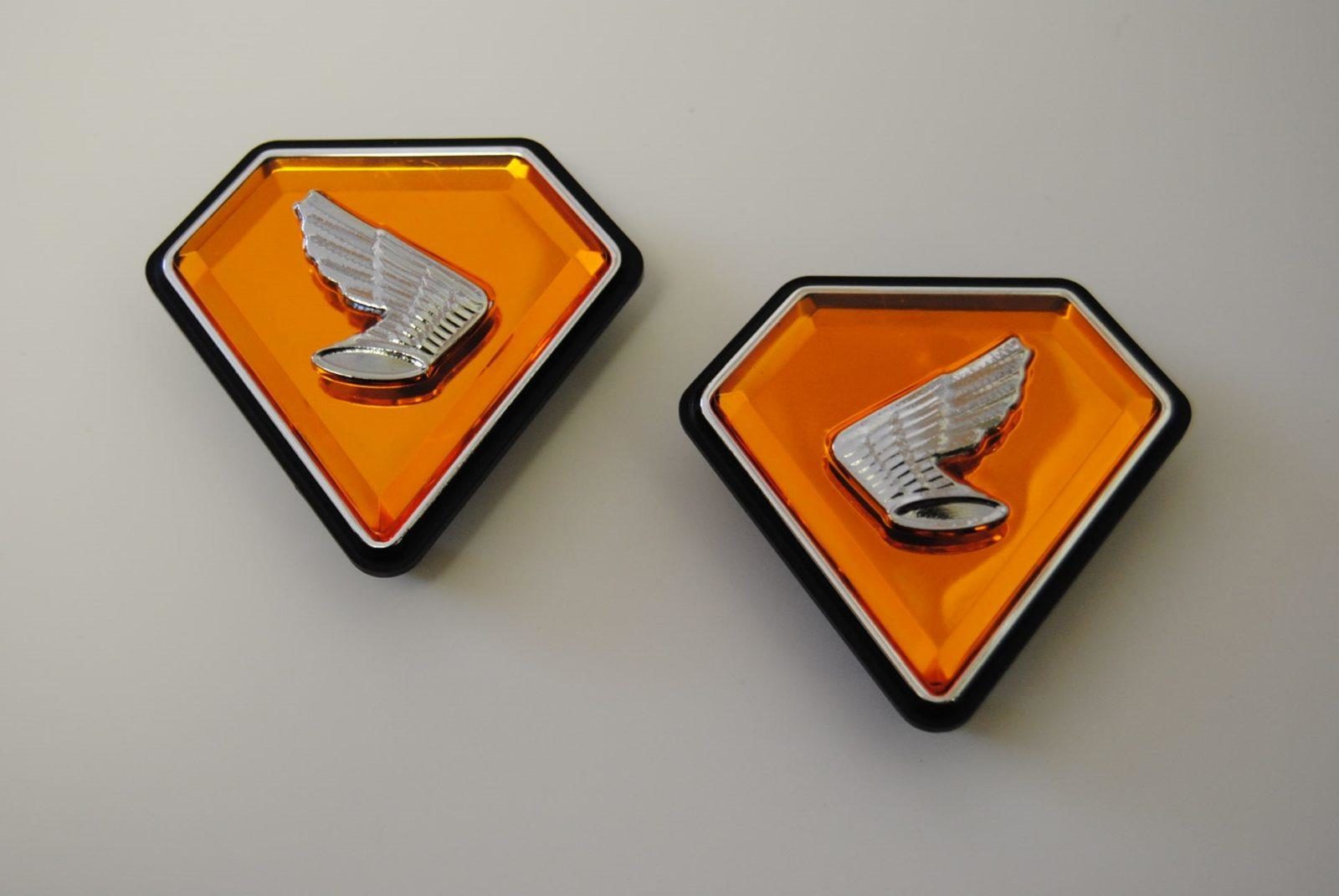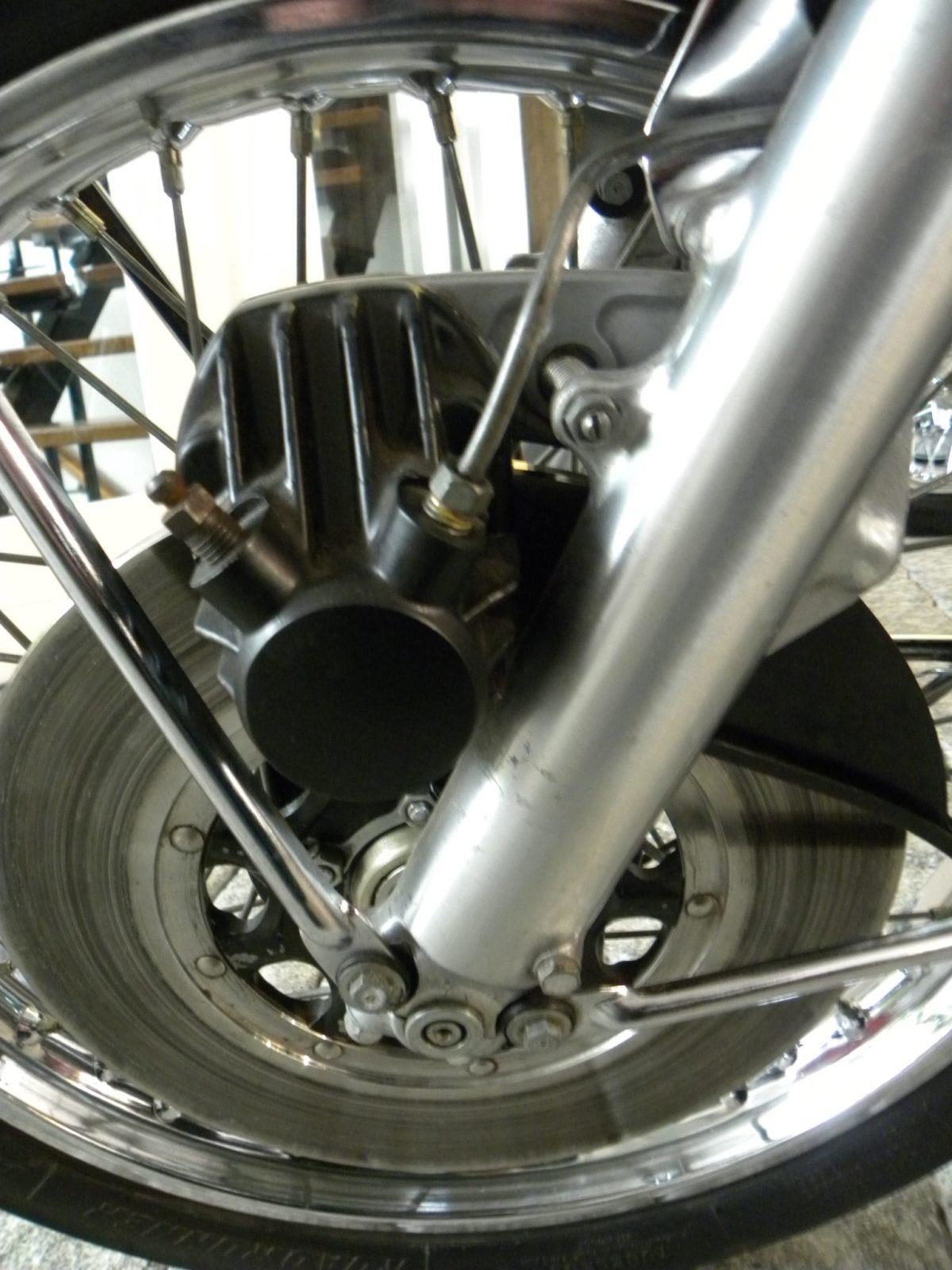The motorcycle that gave motorcycling a new dimension. The first really strong, fast, heavy engine that was also reliable. The final blow to the British motorcycle industry. The 'engine of the (last) century'.
A revolutionary engine
A benchmark for entire generations of motorcyclists. A legend. Four cylinders. An overhead camshaft and a front disc brake. Just as quickly as he was reliable. The Honda CB 750 F from 1969 until now. Then a topper, now one of the most useful and stylish classics. And when you once feel brave, you still have a lot of fellow drivers on your Honda CB 750. Because a Honda CB 750 whose front and rear suspension have been fine-tuned and that is on modern tires? That is still an engine to be reckoned with. It is beautiful, fast enough, the handling is fine.
Buy a copy that is as original and complete as possible. The restoration of a classic Japanese is nowadays often doable thanks to suppliers such as global suppliers. But the prices for new parts for old Japanese are often very high. This certainly applies to color and chrome parts. A complete set of exhausts, for example, quickly costs more than € 2.000. And spraying the candy colors is not for everyone and therefore costs a lot of money.
Abuse Resistance 2.0
In their early days on campsites, there were gleefully tipsy people who let their Honda CB 750 roar at no load until the contact points floated. That led to a block whose ignition was so erratic that the exhaust sound sounded like a firing squad on a national holiday. But the blocks remained intact. The only point of pain was that the jets that provide the camshaft lubrication when using aftermarket oil filters and elastic maintenance intervals could get clogged. Then the crankshaft could break and the Honda CB 750 was suddenly a two-cylinder with half the displacement.
Sand casting as a test balloon
The very first generation had - because Honda did not yet know how the model would catch on - sand-cast crankcases. The scientists haven't decided yet, but thousands of copies have been made with those sand-cast crankcases, not 'a few dozen' as is also claimed. The rarity factor makes those copies more expensive. On early models, also take a look at the crankcase at the level of the sprocket. In the early 70s, a chain broke under all that brutal violence. Because at that time the gas only had two positions: 'open' or 'closed'. And the state of the art hadn't really kept up with developments at Honda. Hence the broken chains and patches of rubber that fell off the rear tire.
No K3, but K2
The most common, most practical Honda CB 750 are the candy yellow K2 and K3 models. When ordering parts, always state the year, number and type. In the course of production there have been quite a few (minor) changes in production, hence. And how can the K3 be recognized? That is on the mudguard near the brake disc.
Simple and key friendly
Maintenance of these machines is still simple. But for synchronizing the carburettors an absolute pitch is no longer enough, the vacuum gauges have to be added. Deviating from the original, but very sensible: the purchase of an electronic ignition.
Technical data Honda CB 750 Four (1969): air-cooled, four-stroke four-cylinder in-line, displacement: 736 cc, maximum power: 67 hp @ 8.000 rpm, gearbox: five-speed, secondary transmission: chain. Frame: double cradle frame. Brakes: front disc brake, rear simplex drum brake. Weight: 218 kg. Top speed: > 170 km/h.










Since May 1979 I also have a (candy gold) CB 750 K2 from 1975. The engine has now more than 151.000 km on it. At more than 100.000 km, the piston rings and the camshaft chain have been renewed. I drive it calmly. The engine consumes almost no oil and starts after a long standstill (and that sometimes happens…) always very smoothly. It has had a 2nd disc brake on it for a few years now. Doesn't look good but it does help, as does the steel brake line. A new set of exhausts (approx. Fl. 1200,-) was once fitted and they are also still in good condition. The engine power has decreased over the years, but that is also allowed at that age… It is always another fun thing to ride and definitely to look at!
What struck me in the photos is once the oil filler cap on the left is this a trick or if a loose capGr.
That's the oil supply tank, this Honda has a dry sump system
Have a 750 four from 1976, 32000 km on the clock, completely original, but four new original pipes were pricey bought from René van Manen, but it has stood still with me for 18 years because my r1 from Yamaha was always taken from the stable, I've had 4 delicious machine but I am now almost 80 years old and sold the r1 last year and now drive regularly with the Honda brakes and carburettors everything renewed carburettors completely cleaned and now drive a bit more quietly because brakes take some getting used to but I can handle them well tear where possible. Go to the club soon because I am a member of MVGStef Hartogs
Motorcycling stays with you young.
Have had a Honda CB 750 four F1 myself and has been with us for 28 years when I was able to sell it well (sorry now) was 59 at the time and the driving was not so good anymore, especially the leaning forward and pain in the wrists and belly started to tease me more. I bought a Yamaha XJ 9 S (soft chopper) 700 years ago that now gives me even more pleasure than the Honda, but I thought the Honda was a nice machine to ride.
I still have a Honda CB 750 K 1, this motorcycle was bought new from 1971 by me, so I am the first owner. Celebrated his 50th birthday this year, but kept limited due to corona, only his brother invited also a CB 750 K1 from the same birth year, in fact with the same license plate number with 1 number difference.
The trips these engines have made are quite large, to name just a few Czechoslovakia, Hungary, Romania, Bulgaria, Turkey, Greece, Italy, Austria, Germany, Norway, Denmark, Sweden, Finland, England maybe forgot something. But still reliable and still in good condition, so remains in the legacy. Maybe Dolf wants to know more about it, just let us know Dolf, his engines with a lot of life experience.
You have been emailed!
I have a 2 K1973 with 4000rpm in 105 still good for 8500mph and 4rpm with ease, although I don't dare try that in 5 and 205 with the single disc brake. Extrapolating and I think the original top speed of XNUMX should still work.
Oh well… We can max 120 or so. Just keep nurturing and driving! Lots of fun!
Lruke bikes, I had the F2 with Comstar wheels and discs all around. The 1st bike I was on the North Cape with in '86 and then rode 2,5 km throughout Scandinavia in 10.500 weeks, wonderful. After all, that's how you start when you start freelancing, right?
Later an incredible speed whobble/tank slacker survived in Luxembourg, after which all bearings were replaced, steering damper on it, etc. etc, but never really familiar feeling again.
But certainly a cool bike for that time.
Well… If your girl cheated on you once… It's a matter of trust. And I think your conclusion is correct!